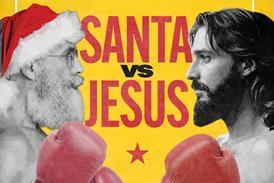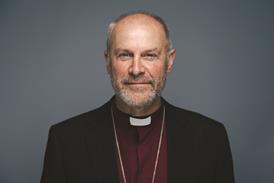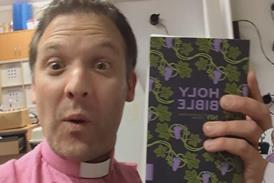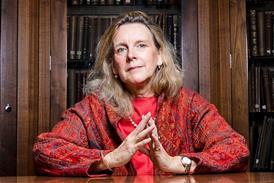The failure of God
By  Rt Rev Dr Emma Ineson2023-03-27T10:56:00
Rt Rev Dr Emma Ineson2023-03-27T10:56:00

A theology of Holy Saturday is for all those who cannot see the way ahead – who suffer, fail or doubt. Between Good Friday and Easter Sunday is where true spiritual growth happens, says Bishop Emma Ineson
I can vividly recall the time when I appeared before a selection panel to discern whether God was calling me to ordination in the Church of England. I was 25 at the time and mother to a small baby. In order to assess my fitness for ordained ministry, I attended several interviews. It was exhausting and, through the fog of my baby brain, I’m surprised I could even remember my name.
Among the panoply of group exercises (terrifying) and psychometric tests (is that ink blot supposed to be a butterfly or a rabbit?), I remember one particular question: “In what sense, if any, do you recognise the failure of God?” The interviewer knew from my paperwork that I had a fairly conservative background.
Related articles
-
 Magazine Features
Magazine FeaturesJesus rose from the dead. Here are 3 reasons why we can be confident
2023-05-01T12:35:00Z By Justin Bass
Two thousand years on, why are Jesus’ teachings still so influential in our world today? And why is he appearing in people’s dreams? The answer to that question lies in the evidence for his death and resurrection, says Justin Bass
-
 Opinion
OpinionThe Bible doesn’t gloss over grief, and neither should we
2023-04-12T09:44:00Z By Amanda Held Opelt
When Amanda Held Opelt suffered a season of loss - including three miscarriages and the death of her sister, Rachel Held Evans - she was confronted with sorrow she didn’t know to how face. Why do so many Christians insist on an immediate, redemptive story arc when they experience suffering?
-
 Magazine Features
Magazine FeaturesGod exists. The resurrection of Jesus proves it
2023-04-04T08:55:00Z
If Jesus miraculously came back to life, it is undisputable evidence for the existence of an all-powerful God, says Grant Bartley. Here’s why he thinks it really did happen
More from Features
-
 Magazine Features
Magazine FeaturesSanta vs Jesus: When Claus meets the Christ
2025-11-28T11:20:00Z By Paul Kerensa
They’re often pitted against one another, but new research from Paul Kerensa has revealed it hasn’t always been this way. Can the Sleighman and the Saviour be friends after all?
-
![Jesus-myths-01-[Recovered]](https://d17xjl6rg4e8ic.cloudfront.net/Pictures/100x67/6/3/7/45637_jesusmyths01recovered_933246.jpg) Magazine Features
Magazine Features6 myths about Jesus debunked
2025-11-28T10:05:00Z By Jared Brock
Given it’s his birthday (kind of), it’s only fair we get to know the real Yehoshua ben Yehoseph. Jared Brock separates fact from fiction
-
 Magazine Features
Magazine FeaturesChurch is overwhelming for many. Here’s how to help
2025-11-28T03:29:00Z By AJ Gomez
Church should be a refuge – but for many, attending a Sunday service is tough. AJ Gomez investigates why some Christians find gathering together difficult, and what both leaders and individuals can do to help
- Issues
- Topics A-Z
- Writers A-Z
- © 2025 Premier Christianity
Site powered by Webvision Cloud


























